Gallery
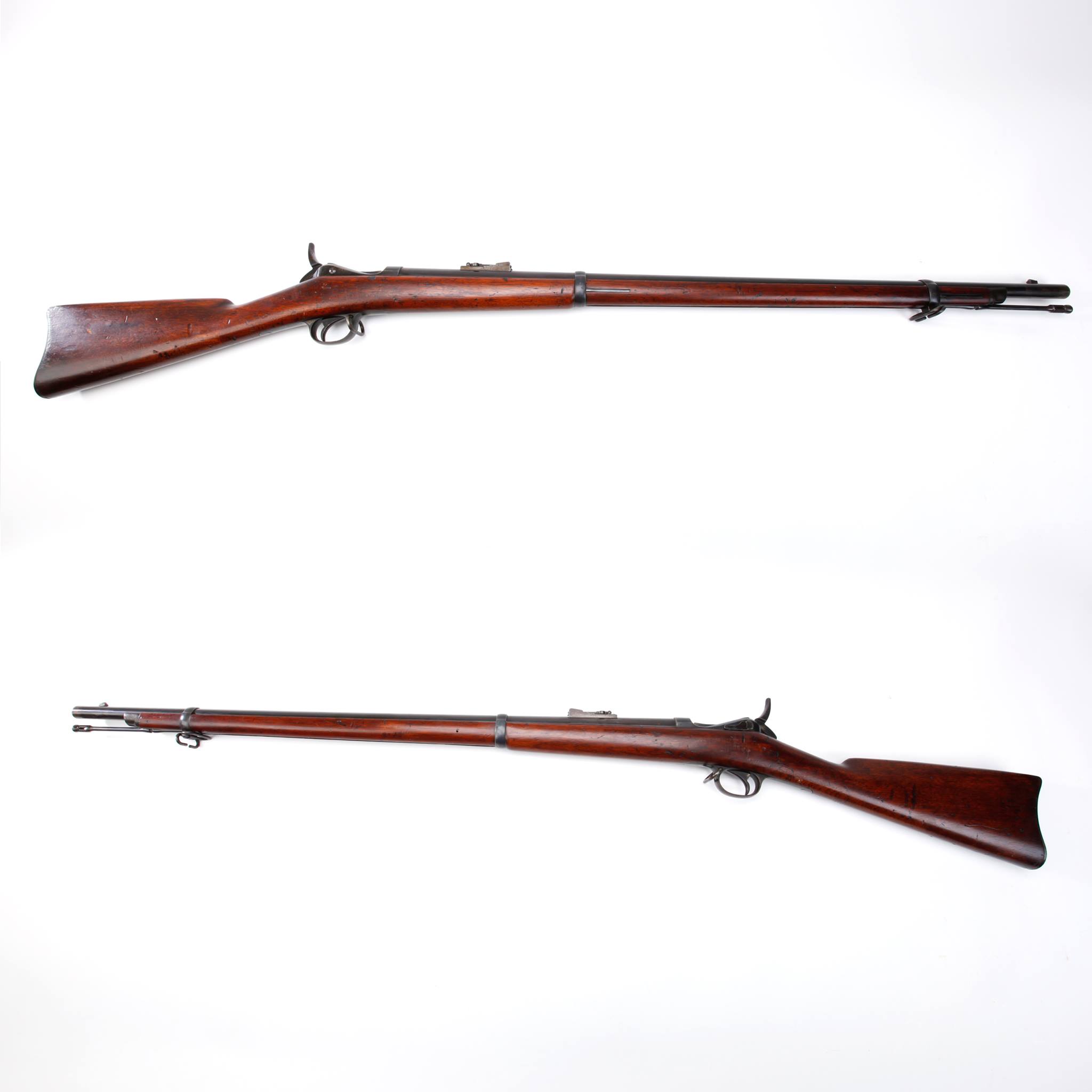
1 of 1
US Springfield/Lee Vertical Rifle
This single shot rifle was state-of-the-art technology at Springfield Armory 140 years ago. James Paris Lee inverted a vertical action rifle that featured a Martini-like dropping block design and chambered it for the .45-70 Government cartridge. Despite needing to be struck on the hammer to open the action or extract a spent cartridge case, the concept was sound - yet only 143 examples were made. This one is serial number 2.
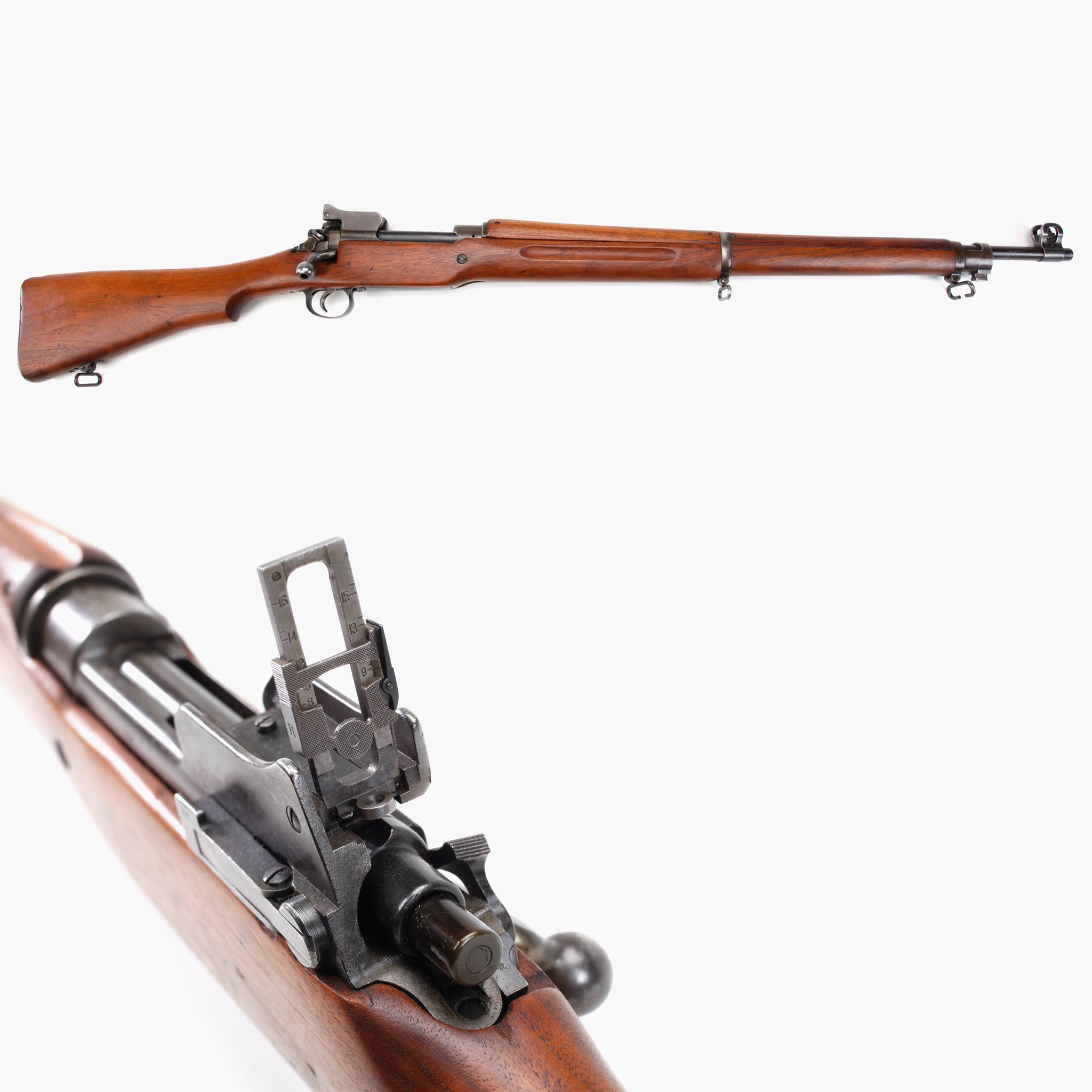
1 of 1
Remington M1917 Rifle
Collectors often wonder what experiences a military firearm may have had. The lower the number, like this Remington Model 1917 with serial number 137, may not mean it was immediately issued to a soldier and carried in service. Unfortunately we were unable to discover anything about this specific rifle, but neighboring numbers 117, 118, 126, and 268 were recorded in the National Archives as being part of a group of guns inspected at the Winchester factory in 1919. Was our rifle included in this group for testing ammunition stateside rather than going overseas? We may never know conclusively, but there's a good chance.
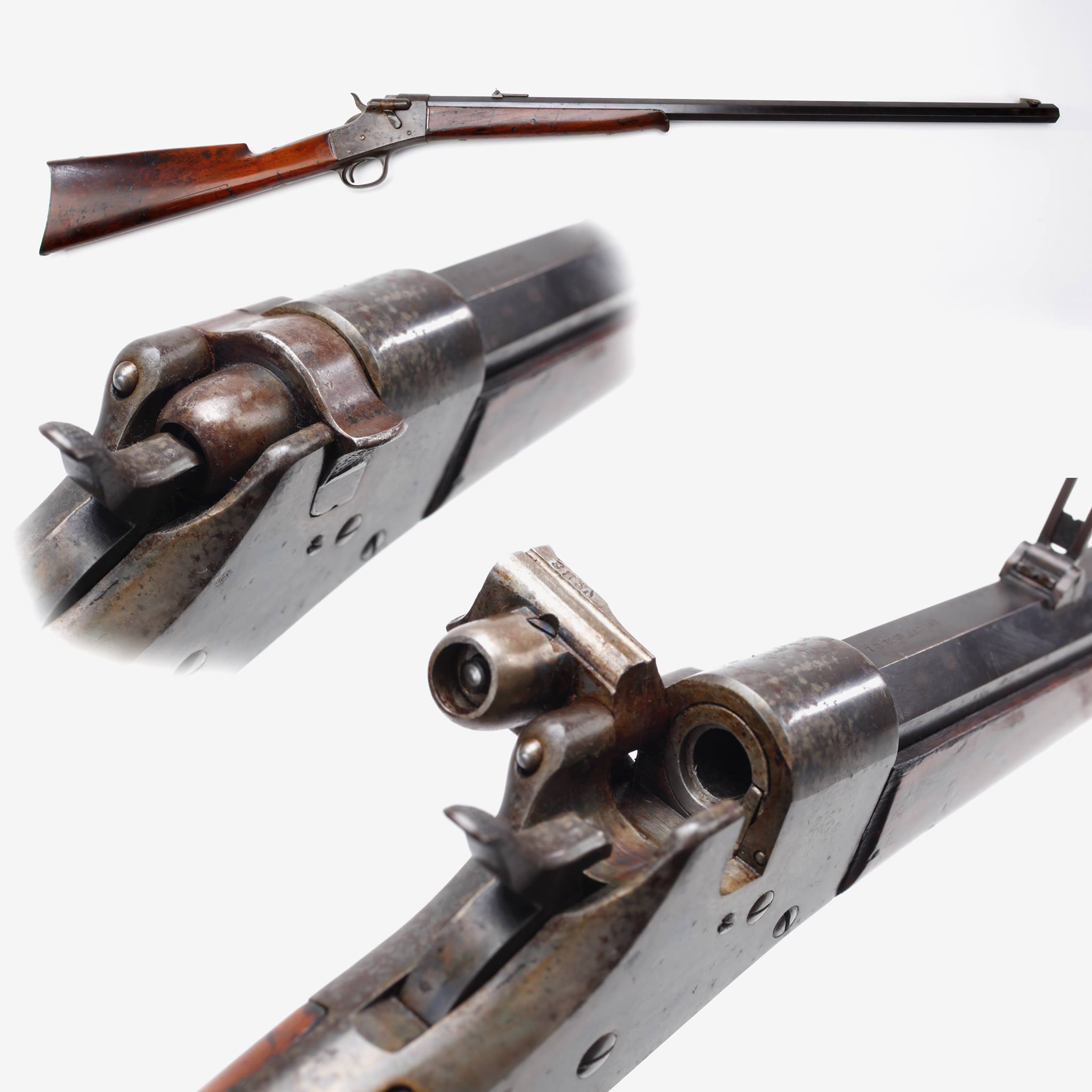
1 of 1
Phoenix Rifle
Guns usually have their make and model stamped on their barrels, however the Phoenix rifle curiously displays only its name and there is no mention of the Whitney Arms company, its manufacturer.
It has been estimated that about 25,000 Phoenix rifles were produced from 1867 to 1881 with chamberings ranging from our example’s .40-70 up to .50 caliber. The side-hinging breechblock of the Phoenix allows for easy identification.
It has been estimated that about 25,000 Phoenix rifles were produced from 1867 to 1881 with chamberings ranging from our example’s .40-70 up to .50 caliber. The side-hinging breechblock of the Phoenix allows for easy identification.
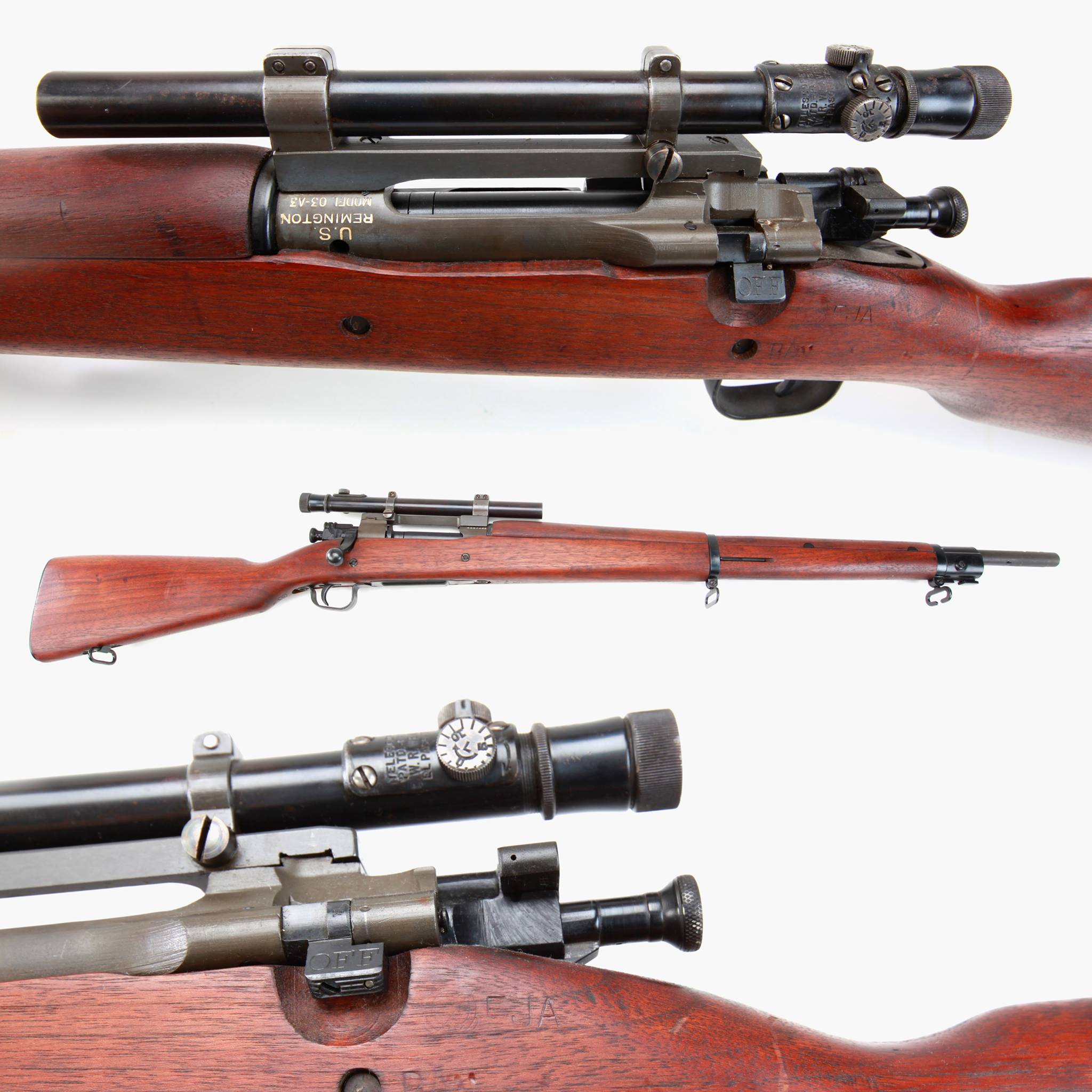
1 of 1
Remington Model 1903A4 Rifle
This bolt-action Remington Model 1903A4 rifle was adopted as an expedient sniper rifle in January 1943, however supplying its optic immediately became an issue. Obtaining enough good quality telescopic sights was not easy during wartime and some early M1903A4s carried Weaver 330 commercial scopes.
One of the easiest ways to determine whether a M1903A4 is legitimate centers on its receiver markings. An A4 sniper rifle is marked as a "Model 03-A3," but those markings should be on the left side of the receiver so that they can be viewed with the scope base installed.
One of the easiest ways to determine whether a M1903A4 is legitimate centers on its receiver markings. An A4 sniper rifle is marked as a "Model 03-A3," but those markings should be on the left side of the receiver so that they can be viewed with the scope base installed.
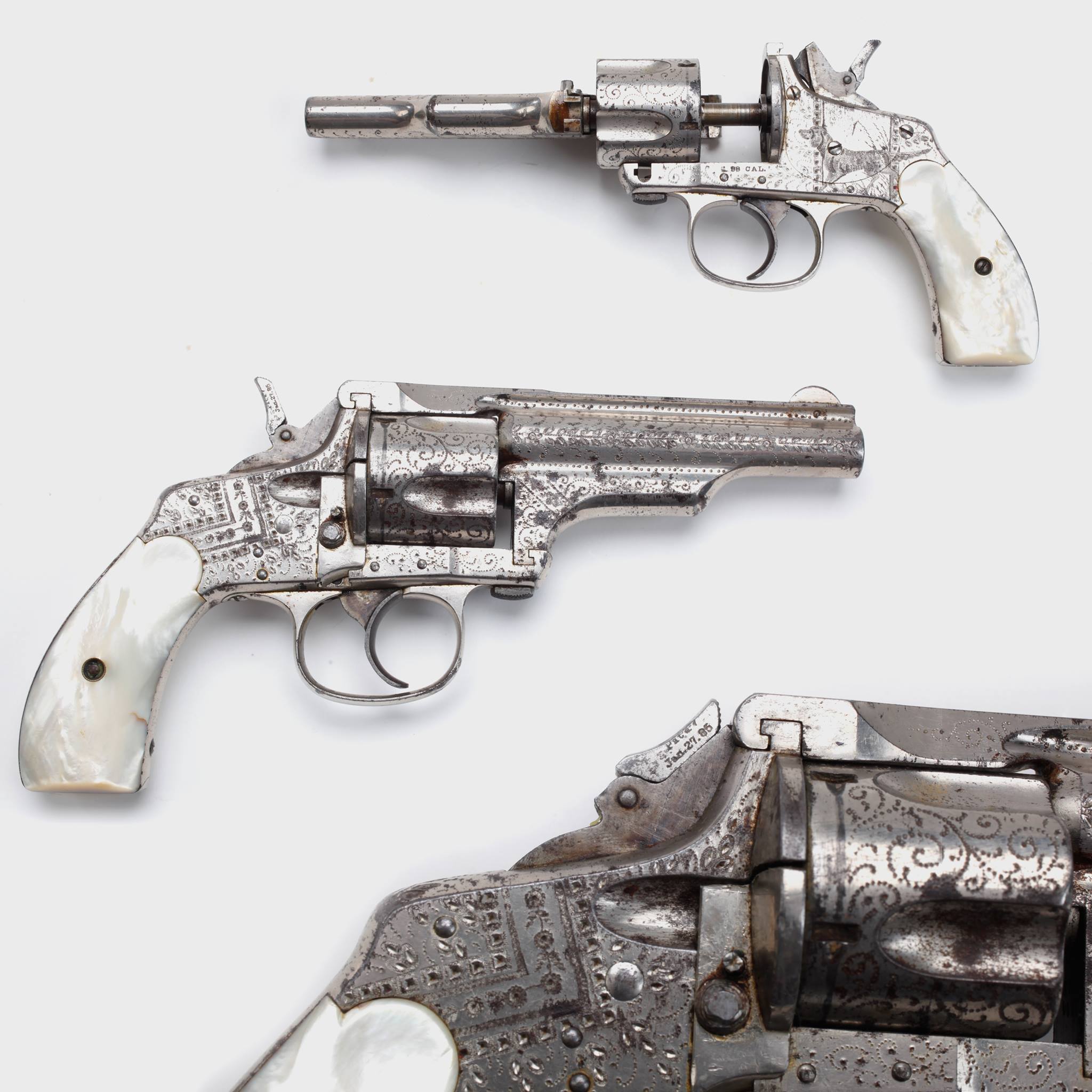
1 of 1
Merwin & Hulbert Revolver
Not every fancy guns of the Old West was a Colt, Smith & Wesson, or Winchester.
One gun that traveled from Missouri to Oregon in the 1880s was this engraved Merwin & Hulbert .38 revolver. Featuring punch dot style and some finer engraving, this double-action also incorporated a folding hammer spur for easy pocket carrying. The mother-of-pearl grip panels weathered several moves around the west without chipping, despite being carried daily by rancher Marshall Fisher.
Merwin & Hulbert was a New York company that existed on paper more than in any factory sense, as its products were actually manufactured by Hopkins & Allen in Connecticut.
One gun that traveled from Missouri to Oregon in the 1880s was this engraved Merwin & Hulbert .38 revolver. Featuring punch dot style and some finer engraving, this double-action also incorporated a folding hammer spur for easy pocket carrying. The mother-of-pearl grip panels weathered several moves around the west without chipping, despite being carried daily by rancher Marshall Fisher.
Merwin & Hulbert was a New York company that existed on paper more than in any factory sense, as its products were actually manufactured by Hopkins & Allen in Connecticut.
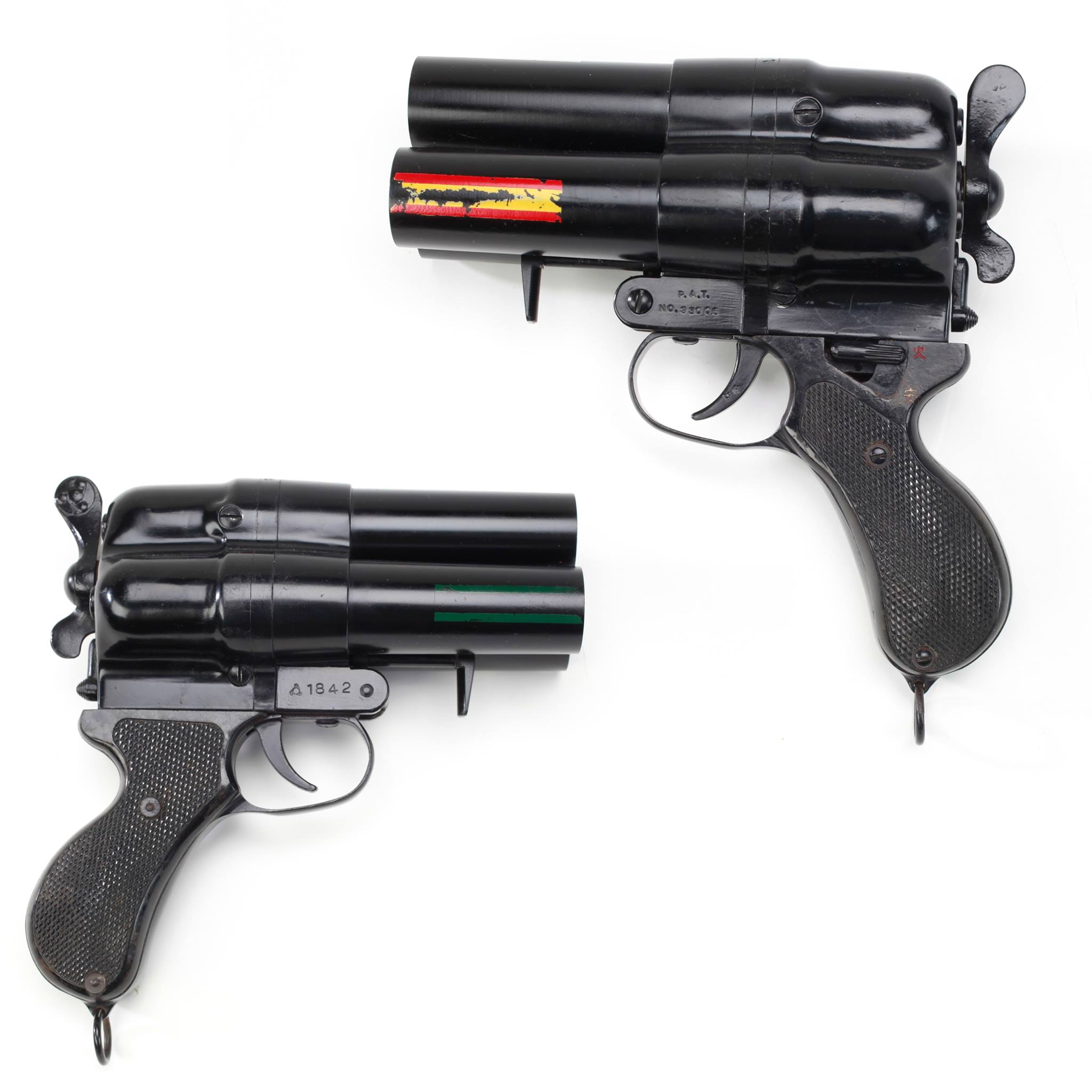
1 of 1
Japanese Flare pistol
WWII-era radios not only had a much shorter range than today's equipment, but they could be jammed easily. As a result, flare pistols were often used to give a visual expedient. Firing three flares at a time, as this Japanese flare pistol was designed to do, could represent a variety of meanings depending on the firing sequence and colors used. This model on display at the NRA National Firearms Museum was recovered from a support vessel that had run aground on a reef.

1 of 1
Smith & Wesson Light Rifles
Britain’s request for a paramilitary 9mm semi-auto carbine in 1940 resulted in the rapid creation of the Smith & Wesson Light Rifle. A little over 1,000 shipped overseas, but there was one big oversight – the guns were made to fire American 9mm ammunition and European 9mm was too powerful.
Original Light Rifles are extremely rare since the British destroyed all but five at the end of WWII. But in 1975 Smith & Wesson released the remaining stock they had kept stateside. The NRA’s National Firearms Museum holds donated examples of both the Mark I and the later Mark IIs with reinforced receivers. The wide vertical housing of this design holds the box magazine and an internal port through which spent casings drop out after firing.
Original Light Rifles are extremely rare since the British destroyed all but five at the end of WWII. But in 1975 Smith & Wesson released the remaining stock they had kept stateside. The NRA’s National Firearms Museum holds donated examples of both the Mark I and the later Mark IIs with reinforced receivers. The wide vertical housing of this design holds the box magazine and an internal port through which spent casings drop out after firing.

 More Like This From Around The NRA
More Like This From Around The NRA



